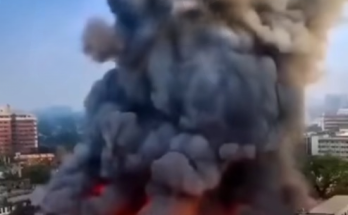Massive 7.7-Magnitude Earthquake Strikes China-Myanmar Border
Just before dawn, a violent tremor shook the China-Myanmar border, catching thousands off guard. The earthquake’s sudden intensity has left experts questioning whether the region was adequately prepared—and communities are now scrambling to survive in its aftermath.

In the early hours of Monday, residents near the border were jolted awake by a massive earthquake that sent shockwaves across multiple Southeast Asian countries. With a magnitude of 7.7, seismologists describe it as one of the strongest quakes the region has experienced in decades.
Epicenter and Regional Impact
The United States Geological Survey (USGS) reported the quake originated roughly 10 kilometers below the surface, a shallow depth that amplified its destructive force. Tremors were felt across southern China, northern Thailand, and parts of Myanmar.
Communities closest to the epicenter suffered the heaviest damage. Poorly constructed homes collapsed, while in larger cities farther away, buildings swayed violently, prompting mass evacuations. Witnesses described the ground rolling like waves or jolting suddenly, highlighting how seismic activity varies by terrain.
Immediate Reactions: Panic and Damage
The pre-dawn quake caught residents by surprise. Families poured into the streets, some still in nightclothes, clinging to one another as buildings shook. In northern Thailand, streetlights flickered and windows shattered. Yunnan province in China saw apartment complexes shaking for nearly a minute, leaving residents hesitant to return indoors. Myanmar villages reported collapsed walls, damaged roads, and widespread blackouts.
Critical infrastructure suffered as well. Electricity grids failed, water pipelines ruptured, and mobile networks went offline, delaying relief efforts and leaving families cut off from communication.
Human Toll: Casualties and Injuries
Early reports confirm dozens of deaths and hundreds of injuries, with numbers expected to rise as search-and-rescue teams reach remote villages. Hospitals are overwhelmed with cases of broken bones, head trauma, and lacerations caused by falling debris. Volunteers have stepped in to donate blood and assist medical staff working around the clock.
Officials warn that casualty figures may increase, especially in mountainous regions where landslides and damaged roads slow aid delivery.
Rescue Operations Underway
First responders, soldiers, and volunteers were mobilized immediately. Specialized teams equipped with heavy machinery, sniffer dogs, and thermal cameras are combing through rubble to save those trapped.
Survival rates drop sharply after 48 hours under debris, making every moment critical. Despite ongoing aftershocks, there are stories of hope—including a child rescued from the ruins of a collapsed school.
🔹 Conclusion
The 7.7-magnitude earthquake has left devastation across borders—destroyed homes, disrupted infrastructure, and dozens of lives lost.
As emergency teams race against time to reach survivors, communities are grappling with fear, uncertainty, and the long road to recovery. This disaster serves as a stark reminder of nature’s unpredictable force and the urgent need for preparedness in seismic zones.

